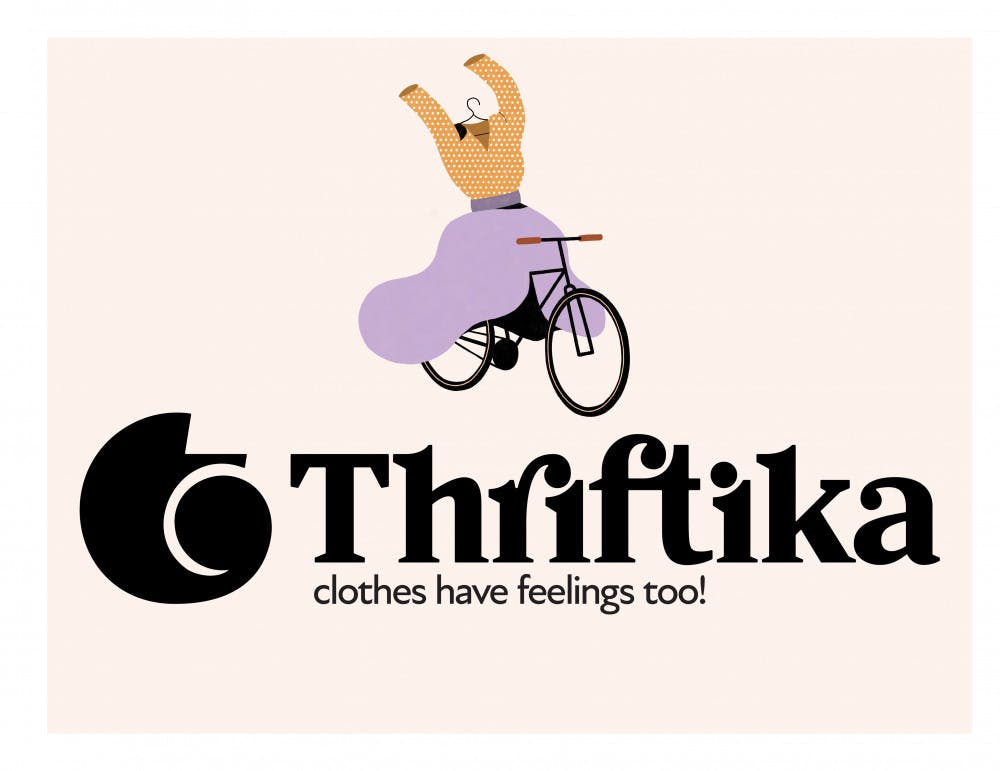Fast fashion is a mess that stretches from Moscow to Midtown Gainesville.
Maria Blokhina would know — she was born in Siberia and raised in Russia’s capital. As global groups like the Russian Fashion Council continue to push for abandoning fast fashion and rethinking consumer culture, the 25-year-old UF graphic design graduate student has been thinking ahead.
She wanted to create something to help consumers navigate the clothing industry in a way that encourages conscious wearing instead of rapid consumption, she said.
“Clothes are supposed to be used way more often,” Blokhina said. “I’m looking at my huge wardrobe and understanding that I’m part of the problem.”
So, she started Thriftika.
The “clothing library” works like a typical library but, instead of books, customers can rent and use clothes as payment at Infinity Hall. Blokhina said she wants people to see clothes as assets instead of closet-fillers.
Participants can bring up to four pieces from their wardrobe in exchange for those in the library’s inventory — preferably the same number they brought — to be brought back after an agreed amount of time, she said.
Thriftika had a few participants for its first session Nov. 15, and Blokhina said she moved the program’s next session to early January so more people can participate. People interested can fill out a sign-up form in the @thriftika_project Instagram account’s bio and they’ll be sent specific details and instructions.
While the majority of the project’s inventory is Blokhina’s clothing at this point, a couple of people were able to take part in the swap.
Charlotte Harmon, a 20-year-old UF advertising junior, was one of them. She said she found out about the project through Thrift Club at UF, as Blokhina was a guest speaker at a general body meeting, and knew she wanted to take part.
After choosing a time slot, Harmon said she paid a temporary deposit and signed a document that holds participants responsible if they damage any clothes they take.
Thriftika’s inventory rack held garments tagged with information about each piece, like if they were stained or ripped, and how much a deposit would be to pick them up, she said. There was also a dressing room to try them on.
In exchange for the four items she brought, she said she took away a pair of jeans — handmade by Blokhina — and a skirt. Once Harmon gave up her own pieces, Blokhina added them to a document to keep track of them.
Harmon had never seen a clothing library before and said it excited her because she doesn’t get to wear the clothes she has enough.
If other people heard more about the “ugly side” of the fashion industry, like unjust wages and unethical conditions for underpaid workers, she said they’d support it, too.
“It’s such a waste going through clothes,” she said. “It really hurts my heart when I see the amount of waste that comes from the clothing industry.”
Thrift Club President Gabrielle Ray, a 19-year-old UF anthropology sophomore, said the club gave Thriftika a platform because both projects hope to create sustainability awareness and encourage people to be clothing-conscious.
By putting clothes they don’t wear often in a space where other people can use them, she said Thriftika encourages a culture less focused on consumption.
Ray had also never heard of anything like it and said she wants to take part in the future — even though, like other fashion addicts, she’s very attached to her own wardrobe.
“There are so many pieces in my closet that have probably never been worn, or maybe worn once,” she said. “I would love for those to get to see the light.”
Maria Blokhina, a 25-year-old UF graphic design graduate student, created Thriftika to encourage fashion consumers to shop ethically through trade.






